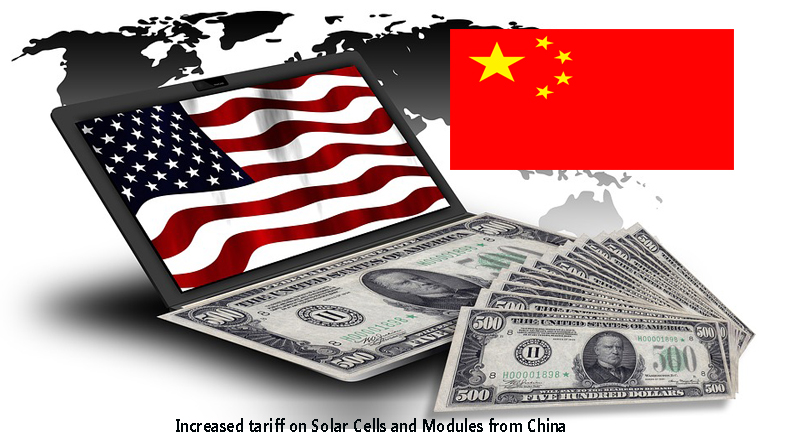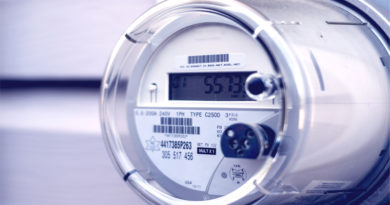US Imposes Additional 25 Percent Import Tariff on Solar Cells and Modules from China

The Office of the United States Trade Representative (USTR) has announced an additional 25 percent tariff on the import of 279 Chinese products, worth approximately $16 billion. Among these products, solar cells and modules are also included.
The United States, in January 2018, had already imposed 30 percent anti-dumping duty on Chinese panels. With the recent duty imposition, imported Chinese modules will now attract 55 percent tariff. These new proposed 10% tariffs would include inverters, AC modules and non-lithium-ion batteries (those made of manganese dioxide, mercuric oxide, lead acid, nickel cadmium or nickel iron).
US has steadily been escalating trade war with one of the world’s most dominant economies and international powers. This could prove to be an advantage for Indian manufactures who already export to the U.S. as well as other countries, who are planning to. In 2017, China’s solar cell and module exports to the US was recorded less than 15 percent of its total imports.
The United States became the largest importer of Indian solar cells and modules in 2017, accounting for approximately 28.4 percent of the total market share, in dollar terms it amounted to less than $50 million. India was exempt from the levy of 30 percent safeguard duty along with a hundred other countries. The tariff is scheduled to gradually decline in five percent increments over a four-year period to 15 percent in 2022. Currently, no us firm features among the top 10 solar manufacturers, a list dominated by China – based firms. To their credit, Chinese firms have not built their market shares on just price, but also on quality in recent years, one of the reasons analysts are not really sure about the effectiveness of the tariffs.
Indian manufacturers area classic case, with the event the government admitting that quality is an issue, thanks to ‘obsolete’ technology being used.
India’s exemption was included as part of the U.S. International Trade Commission’s ruling in the Suniva and Solar World trade case filed under Section 201.
India of course had announced a 25 percent safeguard duty on imported solar modules from China and Malaysia, a movethat was seen as balancing the pressure the protect domestic manufacturers and give them breathing space to upgrade, while trying to ensure than end user prices of power generation did not climb too steeply, with the consumer paying for domestic inefficiencies.
While the US ban will hurt Chinese manufacturers, doubts remain on its effectiveness, as not only are Chinese module prices expected to come down for the remaining part of the year, global operations for some of the biggest firms might yet see China sourced material make its way into the US.




